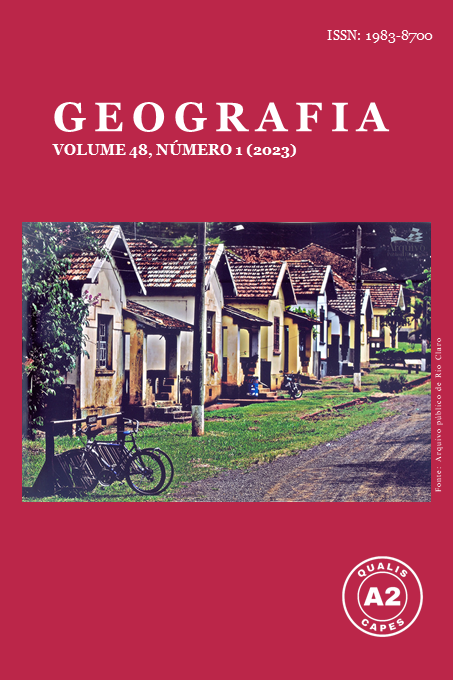80 YEARS OF SOCIAL HOUSING POLICIES IN SANTOS - SP, 1940 - 2020: POPULAR HOUSING AND HISTORICAL HERITAGE CONFLICTS
DOI:
https://doi.org/10.5016/geografia.v48i1.16868Abstract
The city of Santos, SP, Brazil, has 434 thousand inhabitants, of whom 10% live in substandard housing conditions, such as slums, stilt houses, and tenements. Since the 19th century, tenements have been a problem in the city. Despite the establishment of social housing policies during the 20th century, from the Retirement and Pensions Institute to the Minha Casa, Minha Vida program (a Brazilian social housing program for low-income families), it is still a major issue. Starting in 2003, the City Hall has created projects for restoring the downtown historical heritage. The project Alegra Centro (an initiative to revitalize and develop the historical area in Santos, SP) generated conflicts, as many historical buildings in the protected areas had been occupied as tenements for many decades. What are the possibilities for heritage preservation projects in conjunction with an efficient social housing policy?
Downloads
Published
Issue
Section
License
Copyright (c) 2023 GEOGRAFIA

This work is licensed under a Creative Commons Attribution 4.0 International License.
The authors maintain the copyright and grant GEOGRAFIA the right of first publication, with the articles simultaneously licensed under the Creative Commons BY 4.0 License, which allows sharing and adapting the articles for any purpose, as long as appropriate credits and provisions of image rights, privacy or moral rights. Other legal attributions can be accessed at: https://creativecommons.org/licenses/by/4.0/legalcode.en.
Geography, Rio Claro, SP, Brazil - eISSN 1983-8700 is licensed under the Creative Commons BY 4.0 License.





